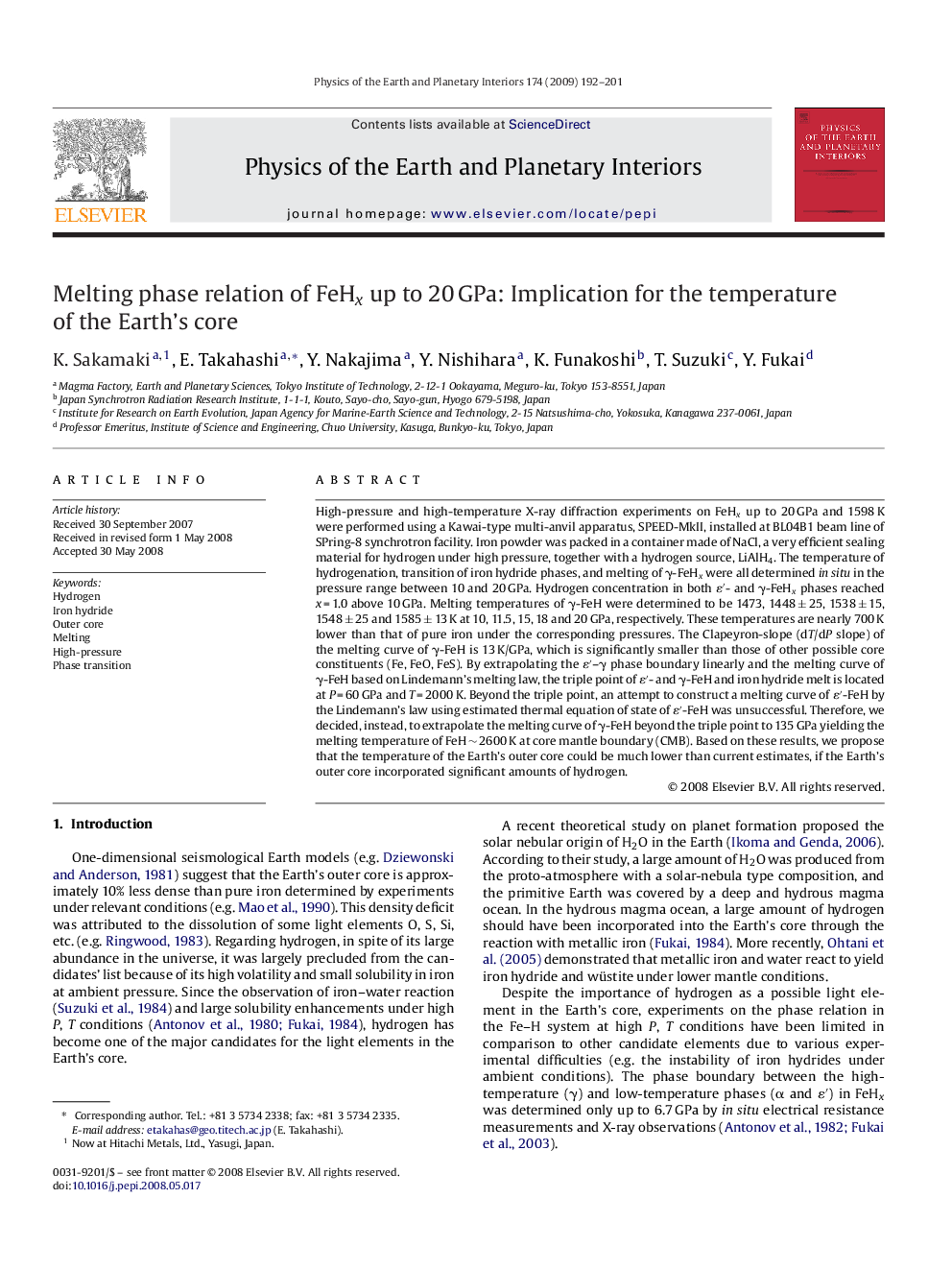| کد مقاله | کد نشریه | سال انتشار | مقاله انگلیسی | نسخه تمام متن |
|---|---|---|---|---|
| 4742480 | 1641570 | 2009 | 10 صفحه PDF | دانلود رایگان |

High-pressure and high-temperature X-ray diffraction experiments on FeHx up to 20 GPa and 1598 K were performed using a Kawai-type multi-anvil apparatus, SPEED-MkII, installed at BL04B1 beam line of SPring-8 synchrotron facility. Iron powder was packed in a container made of NaCl, a very efficient sealing material for hydrogen under high pressure, together with a hydrogen source, LiAlH4. The temperature of hydrogenation, transition of iron hydride phases, and melting of γ-FeHx were all determined in situ in the pressure range between 10 and 20 GPa. Hydrogen concentration in both ɛ′- and γ-FeHx phases reached x = 1.0 above 10 GPa. Melting temperatures of γ-FeH were determined to be 1473, 1448 ± 25, 1538 ± 15, 1548 ± 25 and 1585 ± 13 K at 10, 11.5, 15, 18 and 20 GPa, respectively. These temperatures are nearly 700 K lower than that of pure iron under the corresponding pressures. The Clapeyron-slope (dT/dP slope) of the melting curve of γ-FeH is 13 K/GPa, which is significantly smaller than those of other possible core constituents (Fe, FeO, FeS). By extrapolating the ɛ′–γ phase boundary linearly and the melting curve of γ-FeH based on Lindemann's melting law, the triple point of ɛ′- and γ-FeH and iron hydride melt is located at P = 60 GPa and T = 2000 K. Beyond the triple point, an attempt to construct a melting curve of ɛ′-FeH by the Lindemann's law using estimated thermal equation of state of ɛ′-FeH was unsuccessful. Therefore, we decided, instead, to extrapolate the melting curve of γ-FeH beyond the triple point to 135 GPa yielding the melting temperature of FeH ∼ 2600 K at core mantle boundary (CMB). Based on these results, we propose that the temperature of the Earth's outer core could be much lower than current estimates, if the Earth's outer core incorporated significant amounts of hydrogen.
Journal: Physics of the Earth and Planetary Interiors - Volume 174, Issues 1–4, May 2009, Pages 192–201